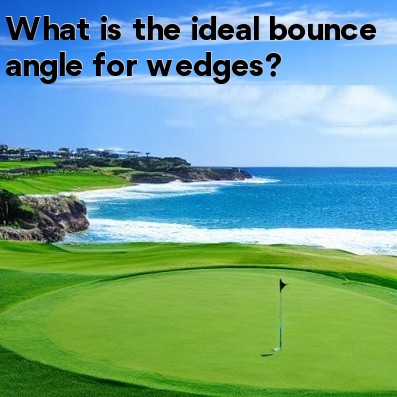
Golfers understand that choosing the right wedge is crucial for their short game performance. One important aspect to consider when selecting a wedge is the bounce angle. The bounce angle refers to the angle between the leading edge of the clubface and the bottom of the sole or the trailing edge of the club.
The bounce angle plays a vital role in how the wedge interacts with the turf. It helps prevent the club from digging into the ground, especially in soft conditions. However, the ideal bounce angle for wedges depends on various factors, including a player's swing style, turf conditions, and personal preference.
Generally, wedge bounce angles range from low to high. A low bounce angle (4 to 6 degrees) is suitable for players with a shallow angle of attack and playing on firm turf conditions. It allows the leading edge to get under the ball cleanly, promoting a crisp contact and more control.
On the other hand, a high bounce angle (10 to 14 degrees) is better for players with a steeper angle of attack and playing on softer turf conditions. It prevents the leading edge from digging into the ground and helps the club glide through the turf smoothly, resulting in better consistency and preventing the club from getting stuck in the ground.
For most golfers, a medium bounce angle (7 to 10 degrees) is considered the ideal balance between versatility and forgiveness. It works well in various turf conditions and provides the necessary support to prevent excessive digging while still allowing players to slide the club under the ball for solid contact.
However, it's important to note that choosing the right wedge bounce angle is not a one-size-fits-all approach. Golfers should consider their own swing characteristics and preferences. Factors such as swing steepness, attack angle, and how the club interacts with the turf should be evaluated to determine the best bounce angle for an individual player.
Another aspect to consider is the type of wedge shots a player commonly faces. For example, a golfer who frequently encounters tight lies and firm greens may benefit from a lower bounce angle to help with precision and control. Conversely, players who often deal with fluffy lies and soft conditions might find a higher bounce angle more useful for preventing chunked shots.
Ultimately, it's crucial for golfers to experiment with different wedge bounce angles and see which option works best for their game. Consulting with a professional club fitter or golf instructor can also provide valuable insights and guidance in selecting the ideal bounce angle based on individual swing characteristics.
In conclusion, the ideal wedge bounce angle varies for each golfer depending on their swing style, turf conditions, and personal preference. While a medium bounce angle is commonly considered a versatile option, players should consider their own unique factors when selecting the best bounce angle for their wedges.





